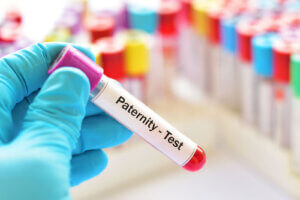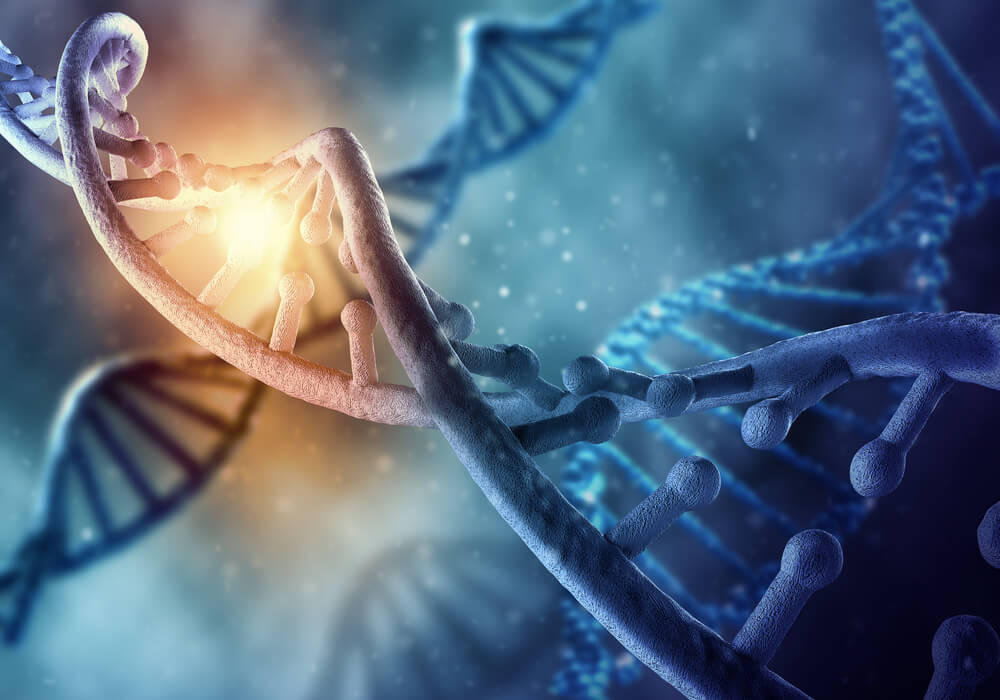Paternity Tests: Methods and Reliability

Until a few years ago, paternity tests didn’t exist. It was only possible to know with certainty if the mother of a child was their biological mother, but not the father, as he hadn’t fathered the child for nine months. For a long time, it has been very difficult to verify paternity, with the only confirmation being physical resemblance.
However, throughout the 20th century, great advances in science have made it possible to develop techniques that can either prove or rule out paternity with some certainty. Currently, these paternity tests are DNA tests, which is why they are often called DNA profiling or genetic fingerprinting.
What are paternity tests based on?
All of us, in our DNA, have genetic information that comes both from our biological mother and father. Approximately 99% of this information is similar between individuals of the same species, but there is 1% of this that differs greatly from one human to another. That part is what paternity tests study.

What type of sample is needed to perform paternity tests?
DNA analysis can be performed on different samples, for example:
- Saliva
- Hair
- Urine
- Blood
- Teeth
This same analysis is used in forensic techniques, as well as for anthropological and historical investigations.
What part of the DNA is studied?
For paternity tests, DNA sequences that are generally used for human identification are studied. These sequences are called ‘repeated or tandem sequences’ because the nucleotides that compose them are repeated. In fact, they generally do it differently for each individual, though not always. That’s why it’s necessary to study several of these repeated sequences and on several chromosomes.
What tests are used to study paternity?
The test that is used after the extraction of the sample with the DNA is called Polymerase Chain Reaction or PCR, which makes copies of the region of DNA that you want to study. This makes it easy to analyze samples with very little DNA.
Subsequently, these DNA sequences are separated by capillary electrophoresis, differentiating those of mother, son, and father. Finally, they will be visualized through a technique called fluorescence. Thus, the repetitions of each sequence studied can be identified.
Generally, about 15 tandem repeat sequences are studied. When in two of them (or more), the part of the child’s sequence that should come from the father’s DNA doesn’t match, the possibility of paternity for that subject is excluded.

Verification test
Sometimes, mutations can occur from one generation to the next. Therefore, after a paternity test, the results are usually corroborated with a second analysis.
The results of a paternity test are usually given in probabilities. This probability is called the ‘paternity index‘. This is because it isn’t possible to give a result with 100% certainty, since you can show that 100% of the analyzed information coincides, but you cannot know if there’s another individual who has the same genetic profile of these sequences.
The ‘Paternity Index’ explains how much more likely it is that the presumed father studied is the biological one, when compared to any other man.
A sample from the mother isn’t necessary to be able to carry out a paternity study, but having one facilitates the differentiation of the child’s genetic information. In short, if the mother participates in the study, the research is made easier, providing safer and more reliable results.
What laboratories can perform a paternity test?
Paternity tests can be done privately or at the request of a judge. The results of these types of studies are often very important to the people involved. That’s why not all laboratories can perform this type of analysis.
They may only be carried out by laboratories that comply with the instructions and technical regulations on biological tests for the determination of paternity and/or maternity. With this, different aspects are addressed, especially quality control and confidentiality.
Until a few years ago, paternity tests didn’t exist. It was only possible to know with certainty if the mother of a child was their biological mother, but not the father, as he hadn’t fathered the child for nine months. For a long time, it has been very difficult to verify paternity, with the only confirmation being physical resemblance.
However, throughout the 20th century, great advances in science have made it possible to develop techniques that can either prove or rule out paternity with some certainty. Currently, these paternity tests are DNA tests, which is why they are often called DNA profiling or genetic fingerprinting.
What are paternity tests based on?
All of us, in our DNA, have genetic information that comes both from our biological mother and father. Approximately 99% of this information is similar between individuals of the same species, but there is 1% of this that differs greatly from one human to another. That part is what paternity tests study.

What type of sample is needed to perform paternity tests?
DNA analysis can be performed on different samples, for example:
- Saliva
- Hair
- Urine
- Blood
- Teeth
This same analysis is used in forensic techniques, as well as for anthropological and historical investigations.
What part of the DNA is studied?
For paternity tests, DNA sequences that are generally used for human identification are studied. These sequences are called ‘repeated or tandem sequences’ because the nucleotides that compose them are repeated. In fact, they generally do it differently for each individual, though not always. That’s why it’s necessary to study several of these repeated sequences and on several chromosomes.
What tests are used to study paternity?
The test that is used after the extraction of the sample with the DNA is called Polymerase Chain Reaction or PCR, which makes copies of the region of DNA that you want to study. This makes it easy to analyze samples with very little DNA.
Subsequently, these DNA sequences are separated by capillary electrophoresis, differentiating those of mother, son, and father. Finally, they will be visualized through a technique called fluorescence. Thus, the repetitions of each sequence studied can be identified.
Generally, about 15 tandem repeat sequences are studied. When in two of them (or more), the part of the child’s sequence that should come from the father’s DNA doesn’t match, the possibility of paternity for that subject is excluded.

Verification test
Sometimes, mutations can occur from one generation to the next. Therefore, after a paternity test, the results are usually corroborated with a second analysis.
The results of a paternity test are usually given in probabilities. This probability is called the ‘paternity index‘. This is because it isn’t possible to give a result with 100% certainty, since you can show that 100% of the analyzed information coincides, but you cannot know if there’s another individual who has the same genetic profile of these sequences.
The ‘Paternity Index’ explains how much more likely it is that the presumed father studied is the biological one, when compared to any other man.
A sample from the mother isn’t necessary to be able to carry out a paternity study, but having one facilitates the differentiation of the child’s genetic information. In short, if the mother participates in the study, the research is made easier, providing safer and more reliable results.
What laboratories can perform a paternity test?
Paternity tests can be done privately or at the request of a judge. The results of these types of studies are often very important to the people involved. That’s why not all laboratories can perform this type of analysis.
They may only be carried out by laboratories that comply with the instructions and technical regulations on biological tests for the determination of paternity and/or maternity. With this, different aspects are addressed, especially quality control and confidentiality.
- Marcela Lagos L, Helena Poggi M, Cecilia Mellado S. Conceptos básicos sobre el estudio de paternidad. Rev Med Chil. 2011;139(4):542–7.
- Rangel-Villalobos H. La prueba de paternidad con ADN. Una descripción para abogados, laboratorios clínicos y público general. NOTICONAQUIC. 20AD;18(49):40–51.
- Referencia del Documento: Diario Oficial/Normas Generales/Año 2000/DO 08/01/2000 RES 1.450 2000 SERVICIO MEDICO LEGAL Servicio Médico Legal INSTRUCCIONES Y NORMATIVA TECNICA SOBRE PRUEBAS BIOLOGICAS PARA LA DETERMINACION DE LA PATERNIDAD Y/O MATERNIDAD (Resolución) [Internet]. [cited 2019 Feb 18]. Available from: http://www.sml.gob.cl/transparencia/transparencia2007/res 1450 adn-2000.pdf
Este texto se ofrece únicamente con propósitos informativos y no reemplaza la consulta con un profesional. Ante dudas, consulta a tu especialista.







